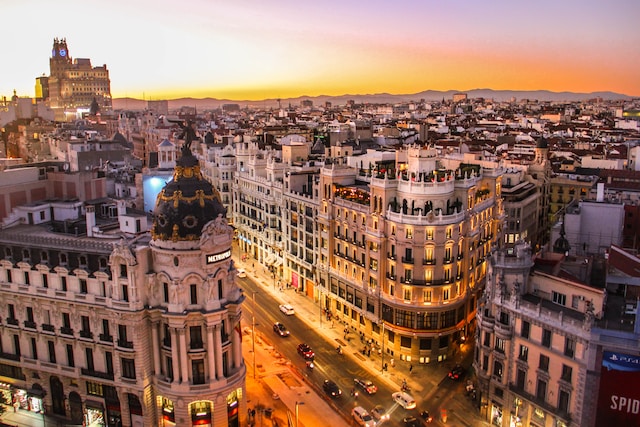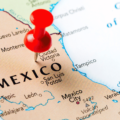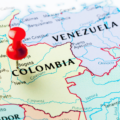Ever feel that pull toward a city that just buzzes with life? That’s exactly what drew me to Madrid. As a freelance copywriter and full-time digital nomad, I’ve learned to spot the places that have that perfect mix of energy, affordability, and, of course, great coffee. Madrid has it all.
Spain’s capital isn’t just another European city, it’s a place where you can truly live. This updated 2025 guide is my story of falling for this vibrant city, packed with all the tips I wish I’d had on day one.
I’m Jeff, “the chilled nomad,” and I want to walk you through everything, from finding the perfect neighborhood to navigating the tapas scene like a local. Let’s get you settled in.
Key Takeaways
- Madrid is a top digital nomad destination due to its balance of affordability and high quality of life, with monthly costs ranging from €1,200 to €2,200.
- The city has a diverse range of neighborhoods, from the bohemian and creative hub of Malasaña to the upscale and quiet district of Salamanca.
- Madrid boasts a fantastic coworking scene with options like Impact Hub and The Shed Coworking, plus countless laptop-friendly cafes such as Toma Café and La Bicicleta.
- Getting around is easy and affordable thanks to an efficient public transport system, with a monthly pass for the central zone costing around €32.70 as of mid-2025.
- Spain’s Digital Nomad Visa makes longer stays possible for non-EU citizens, requiring a minimum monthly income of roughly €2,760.
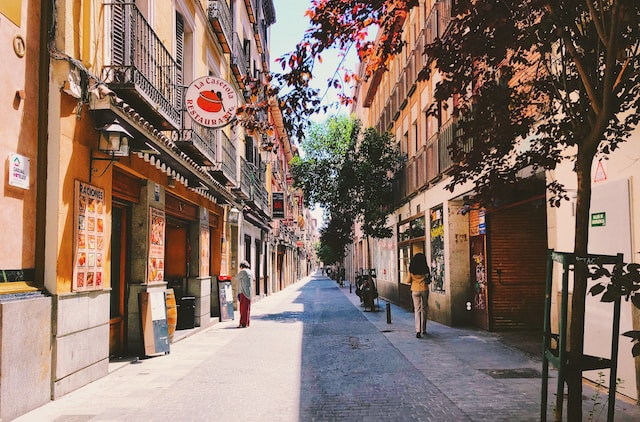
Living And Working In Madrid As A Digital Nomad
My first impression of Madrid was pure energy. It’s a city that feels alive around the clock, blending historic charm with modern efficiency. It’s no wonder it’s becoming such a hotspot for remote workers. With its fast internet and huge international community, settling in was easier than I expected.
Cost Of Living In Madrid
One of the first things I noticed was how affordable Madrid can be compared to other major European capitals. While you’ll see generic figures online, my experience for a comfortable lifestyle, not extravagantly but not pinching pennies, was around €1,600 to €2,000 per month.
Here’s a rough idea of what to expect for monthly costs in 2025:
- Rent (Private Room): €400 – €700 in a shared flat is standard.
- Rent (Studio/1-Bedroom): Expect to pay €900 – €1,500 for your own place in a central neighborhood.
- Groceries: I budgeted around €200 – €250 a month by shopping at local markets.
- Utilities & Internet: This usually came to about €100 – €120 for a small apartment.
- Eating Out: A huge part of the culture! A “menú del día” (a set lunch menu) is a lifesaver, often costing just €10 to €15 for a three-course meal.
Best Neighbourhoods For Digital Nomads
Choosing a neighborhood in Madrid is like choosing a personality. Each barrio has a distinct vibe, and I had a great time exploring them.
| Neighbourhood | Best For | My Take |
|---|---|---|
| Malasaña | Creatives & Nightlife | This was my favorite. It’s Madrid’s hipster heart, packed with vintage shops, tattoo parlors, and some of the best coffee shops. It’s lively, young, and always buzzing. |
| La Latina | Tapas & Tradition | This is where you go for an authentic Madrid experience. I loved spending Sunday mornings at the El Rastro flea market and then hopping between tapas bars. |
| Chamberí | Quiet & Local Feel | This area feels more residential and calm. It’s a great choice if you want to escape the main tourist crowds but still be well-connected. |
| Lavapiés | Multicultural & Budget-Friendly | Known as the city’s cultural melting pot, Lavapiés offers amazing international food and vibrant street art. It’s one of the most affordable central areas. |
| Salamanca | Luxury & Upscale Living | If you’re looking for high-end boutiques, elegant buildings, and fine dining, this is your spot. It’s quieter and more polished than other central districts. |
Each neighborhood is a world of its own, but the great public transport means you’re never far from anywhere.
Accommodation Options For Digital Nomads
Finding a place to live is often the biggest challenge. I learned a few things along the way that made the process much smoother.
Finding Long-Term Rentals
The rental market in Madrid can be competitive. Landlords often prefer 12-month leases, which isn’t always ideal for a nomad. My best advice is to use platforms like Idealista and Fotocasa, which are the go-to rental websites in Spain.
Be prepared for a bit of bureaucracy. Many landlords require a Spanish bank account and an NIE (Foreigner’s Identity Number), which can be a hurdle. Sometimes, offering to pay a few months’ rent upfront can help build trust if you’re just arriving.
Co-Living Spaces
For a hassle-free start, co-living is a fantastic option. It’s how I started my Madrid journey. These spaces offer a private room with shared common areas, and all your bills (utilities, Wi-Fi, cleaning) are included in one price. It’s a brilliant way to meet people right away.
Some popular options in Madrid include:
- Node Carabanchel: Offers modern, fully furnished studios and apartments with shared spaces like a pool, gym, and coworking area, with prices starting from €835 per month.
- Colonies “Waka” in Tetuán: This space provides private rooms with en-suite bathrooms, and shared kitchens and living rooms within larger apartments, plus a communal lounge and rooftop pool.
- Outsite Madrid: Geared specifically toward remote workers, Outsite combines living spaces with a strong community focus, perfect for networking and making friends.
Co-Working Spaces And Cafes In Madrid
Madrid has an amazing culture of working from cafes and a growing number of top-notch coworking spaces. I found it easy to stay productive and connected.
Top Co-Working Spaces
When I needed a dedicated desk and super-fast internet, I checked out some of the city’s best coworking spots. They’re also great for networking.
- Impact Hub Madrid: With several locations, this space is part of a global network focused on social innovation. It’s perfect if you’re looking for a collaborative community and networking events.
- The Shed Coworking: Known for its bright, airy design and positive environment, The Shed offers flexible plans with day passes starting around €15.
- Talent Garden: Located near Atocha station, this space is an innovation hub for tech and digital professionals, offering events and workshops. Monthly plans start around €250.
- Google Campus Madrid: This is less of a traditional coworking space and more of a community hub for startups and tech entrepreneurs. It offers free access to its cafe and event spaces, but you need to register as a member online.
- Goya Smart Coworking: Situated in the upscale Salamanca district, this spot offers a more polished and professional environment with private offices and shared workspaces.
Best Cafes For Remote Work
Working from a cafe is my favorite way to soak up the local atmosphere. Madrid has so many great options where laptops are welcome.
- Toma Café: A pioneer in Madrid’s specialty coffee scene, Toma is a popular spot. It can get busy, but the coffee is worth it. Just a heads up, they don’t allow laptops on weekends.
- La Bicicleta: This place in Malasaña is practically designed for digital nomads. It has a dedicated work area, plenty of outlets, and serves everything from coffee to cocktails.
- Federal Café: With a bright, airy vibe and a delicious brunch menu, this Australian-inspired cafe is a fantastic place to spend a few hours working.
- Perro de Pavlov Café: A cozy spot in La Latina with a friendly, local atmosphere. I loved their chai lattes, but remember they close for a few hours in the afternoon for siesta.
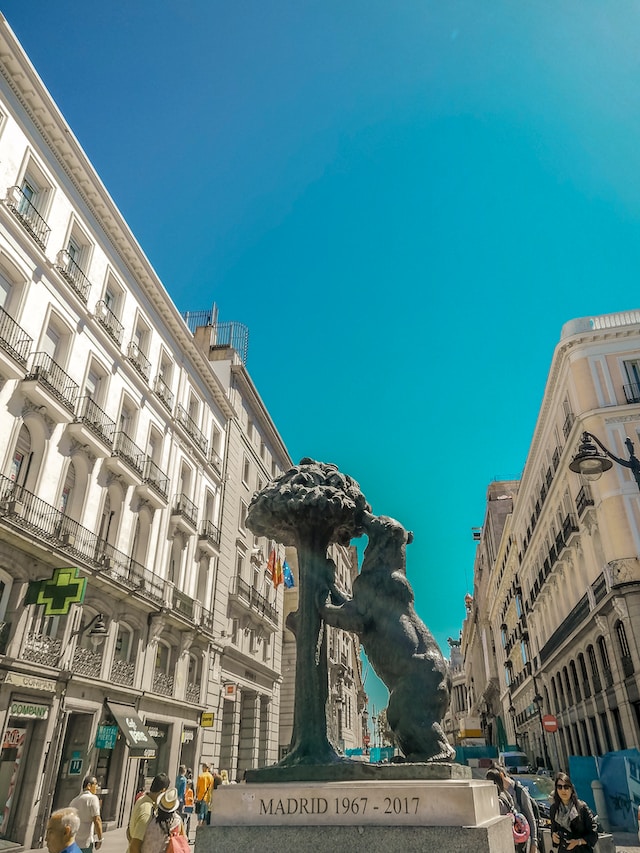
Madrid climate/weather
I learned quickly that Madrid’s climate is one of extremes. The city has a dry, continental Mediterranean climate, which means hot summers and chilly winters.
You really have to be prepared for the summer heat. In July and August, temperatures regularly soar into the 30-35 degrees Celsius range (86-95 degrees Fahrenheit). The sun is intense, and the city slows down. It’s the perfect excuse to adopt the local siesta culture!
Winters, on the other hand, can be colder than you might expect for Spain. From December to February, daytime temperatures are crisp, often around 6-10 degrees Celsius (43-50 degrees Fahrenheit), and it can drop close to freezing at night.
My favorite times of year were definitely spring and autumn. The weather is perfect, with sunny days and comfortable temperatures, making it ideal for exploring the city on foot.
Transportation In Madrid
Getting around Madrid is incredibly easy, which is a huge plus for me. The public transport system is one of the best I’ve used in Europe.
Public Transport Options
The Madrid Metro is fantastic. It’s clean, efficient, and covers almost the entire city with its 13 lines. Trains run from 6 am to 1:30 am, so you’re never stranded.
For longer stays, the best value is the monthly transport pass (Abono). As of July 2025, the price for Zone A, which covers the entire city center, is around €32.70. If you’re just visiting for a short time, a 10-ride “Metrobús” ticket is a great option and costs just €7.30.
Taxis And Rideshare Services
Official taxis are white with a red stripe and are readily available. They are metered and generally safe and reliable. For ridesharing, both Uber and Cabify operate in Madrid. I found that Cabify, a Spanish company, was often slightly cheaper and is a favorite among locals.
Food And Dining In Madrid
Let’s talk about the best part, the food! Madrid’s culinary scene is incredible, from traditional tapas to modern cuisine.
Must-Try Local Dishes
You can’t leave Madrid without trying some of the classics. Here are a few of my personal favorites:
- Cocido Madrileño: A hearty, three-course stew that’s perfect for a winter day. It’s a whole experience.
- Bocadillo de Calamares: A simple but delicious fried squid sandwich. The best ones are found in the little bars surrounding Plaza Mayor.
- Huevos Rotos: “Broken eggs” served over fried potatoes, often with chorizo or ham. It’s the ultimate comfort food.
- Churros con Chocolate: Deep-fried dough dipped in thick, rich hot chocolate. The iconic spot for this is Chocolatería San Ginés, which has been open since 1894.
- Patatas Bravas: Fried potatoes with a spicy tomato-based sauce. A staple of any tapas crawl.
Top Tapas Restaurants
Going for tapas is a social ritual in Madrid. You hop from bar to bar, having a small dish and a drink at each one.
- Casa Toni: A classic, no-frills tavern in Sol. They are famous for their grilled offal dishes, but I loved their croquettes.
- El Sur: This cozy spot in La Latina serves up creative tapas with a modern twist. Their grilled octopus is fantastic.
- Juana la Loca: Also in La Latina, this place is famous for its incredible tortilla de patatas (Spanish omelet) with caramelized onions. It’s a must-try.
- Mercado de San Miguel: This isn’t a single restaurant but a beautiful iron-and-glass food market next to Plaza Mayor. It’s a bit touristy, but the variety of tapas stalls is amazing for trying a little bit of everything.
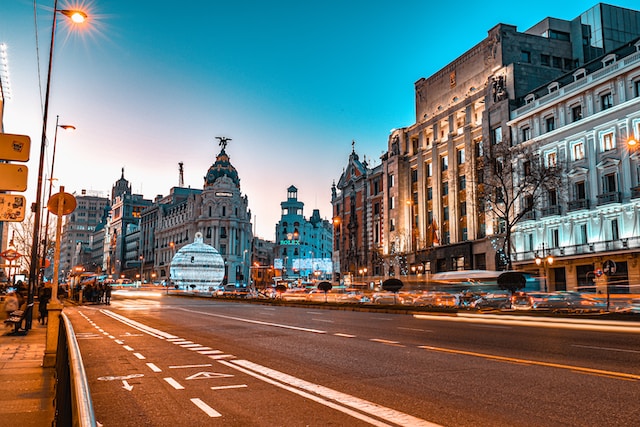
Cultural Insights And Etiquette
Adjusting to the rhythm of Madrid life took me a minute, but I grew to love it. It’s a city that prioritizes social life and enjoying the moment.
Public Display Of Affection
Madrid has a very relaxed and open attitude. Holding hands, a hug, or a quick kiss on the cheek are completely normal and you’ll see it everywhere. The city is also known for being very LGBTQ+ friendly. While it’s a liberal city, it’s always good to be mindful of your surroundings, as you would anywhere.
Siesta Culture
The siesta is real, though it’s not about everyone taking a nap anymore. I learned this the hard way on my first week. Many smaller, family-run shops, banks, and businesses close from around 2 PM to 5 PM. It’s a time for the main meal of the day and a break from work. Big chains and department stores in the center usually stay open, but it’s something to plan your errands around.
Safety And Security For Digital Nomads In Madrid
Madrid is a very safe city overall. I never felt in danger, but like any major European capital, petty crime like pickpocketing is the main thing to watch out for.
Crowded tourist areas like Puerta del Sol, Gran Vía, and the Metro are hotspots. A common tactic involves someone trying to distract you while an accomplice grabs your wallet or phone. Also, be aware of scams like the “lucky rosemary” women who will offer you a rosemary sprig and then aggressively demand payment. Just be aware of your surroundings, keep your valuables secure, and you’ll be fine.
Visa Requirements For Digital Nomads In Spain
This is a big one for non-EU citizens like myself. Spain’s introduction of the Digital Nomad Visa has been a game-changer.
Length Of Stay With Spanish Visa
For most non-EU travelers, you can stay in the Schengen Area (which includes Spain) for up to 90 days without a visa. For longer stays, you need to get a visa. The Digital Nomad Visa allows you to live and work in Spain for an initial period of one year, and it can be renewed for up to five years. After five years of residency, you can even apply for permanent residency.
Required Documents For Spanish Visa
Applying for the Digital Nomad Visa involves a bit of paperwork, but it’s worth it. The main requirements have been updated for 2025.
The most critical requirement is proving a stable income. For 2025, you must demonstrate a monthly income of at least 200% of Spain’s minimum wage, which comes out to roughly €2,760 per month. This requirement increases if you bring family members.
Other key documents you’ll generally need include:
- A completed Spanish visa application form
- A valid passport and a recent passport-quality photo
- Proof of remote work (a contract with a foreign company or proof of freelance clients outside of Spain)
- A clean criminal record certificate from the last two years
- Proof of private health insurance with full coverage in Spain
- Proof of accommodation in Spain
The process can take a few months, so it’s best to start well in advance of your planned travel date.
Spain Digital Nomad visa
The Digital Nomad Visa is specifically for non-EU citizens who can prove they can work remotely. Here are the key points to remember:
- Income Requirement: You must earn at least €2,760 per month as a solo applicant in 2025.
- Remote Work: You must have been working for your company or with your freelance clients for at least three months prior to applying. Your company also needs to have been operating for at least one year.
- Tax Benefits: One of the big advantages is a special tax regime. You can be taxed at a flat rate of 24% on your Spanish-sourced income up to €600,000, which is a significant saving compared to the standard progressive rates.
- Flexibility: Freelancers can earn up to 20% of their income from clients based in Spain.
It’s a fantastic option that makes living and working legally in Spain much more accessible.
Top Attractions And Activities For Digital Nomads In Madrid
When you need a break from work, Madrid has an endless supply of things to see and do. I made sure to take full advantage of my downtime.
Parque Del Retiro
This is Madrid’s version of Central Park, a massive green space right in the city center. I loved spending afternoons here, just walking, reading by the lake, or visiting the stunning Palacio de Cristal (Crystal Palace), which often hosts free art exhibits. It’s the perfect urban escape.
Museo Del Prado
Even if you’re not a huge art buff, the Museo del Prado is a must-see. It’s one of the world’s greatest art museums, with masterpieces by Spanish artists like Goya, Velázquez, and El Greco.
Here’s a pro-tip: admission is free for the last two hours of the day! You can get in for free from Monday to Saturday, 6 PM to 8 PM, and on Sundays from 5 PM to 7 PM. Just be prepared for a queue.
Real Madrid Football Club
Football is a religion in Madrid. Even if you’re not a huge fan, experiencing a Real Madrid match at the legendary Santiago Bernabéu Stadium is an unforgettable experience. The atmosphere is electric. If you can’t make it to a game, the stadium tour is also really impressive, giving you a behind-the-scenes look at the locker rooms and trophy collection.
Pros And Cons Of Living In Madrid As A Digital Nomad
After spending a good amount of time in Madrid, I have a pretty balanced view of the city. Like any place, it has its amazing sides and its challenges.
The Things I Loved
- Amazing Quality of Life: Madrid has a fantastic energy. The people are friendly, the social life is incredible, and there are 350 sunny days a year.
- Great Connectivity: With some of the fastest internet in Europe and a major international airport, it’s a perfect base for a digital nomad.
- Affordable Public Transport: The metro and bus system is cheap, reliable, and makes getting around the city a breeze.
- Incredible Food Scene: From cheap and delicious tapas to world-class restaurants, the food culture is second to none.
The Challenges to Keep in Mind
- The Bureaucracy Can Be Slow: I learned that things like getting your residency card or opening a bank account can take patience. The “mañana” culture is real sometimes.
- The Language Barrier: While many young people in the city center speak English, you really need some Spanish for daily life, especially when dealing with landlords or official paperwork. For me, this was a pro, as it forced me to improve my skills!
- The Summer Heat: I can’t stress this enough, July and August are incredibly hot. The city is built for it, but it’s an intense, dry heat that takes getting used to.
Conclusion
So, is Madrid the right place for you? In my experience, it’s an almost perfect city for a digital nomad.
It offers that rare combination of affordability, a vibrant and welcoming culture, and all the infrastructure you need to work effectively. From the buzzing tapas bars in La Latina to the creative energy of Malasaña, Madrid has a neighborhood for every mood.
Yes, there are challenges like the summer heat and the paperwork, but the rewards are immense. For me, as Jeff the chilled nomad, Madrid provided the perfect balance of work and life. It’s a city I know I’ll be coming back to, and I hope this 2025 guide helps you fall in love with it too.
FAQs:
1. What are some popular coworking spaces in Madrid for digital nomads?
Madrid has a range of great coworking spaces. Some of the most popular are Impact Hub Madrid, The Shed Coworking, and Talent Garden. They offer flexible plans and are great for meeting other remote workers.
2. What is the cost of living like for digital nomads in Madrid?
Madrid is more affordable than many other major European cities. A comfortable monthly budget for a single person would be between €1,600 and €2,200, with rent being the biggest expense.
3. How easy is it to find short-term accommodation options for digital nomads in Madrid?
It’s quite easy. Platforms like Airbnb and Spotahome have lots of options. For a more social and hassle-free experience, I recommend looking into co-living spaces like Node or Colonies, which are becoming very popular.
4. What should I know about working remotely from Spain as a self-employed or freelance worker?
If you’re a non-EU citizen staying for more than 90 days, you’ll need to get the Digital Nomad Visa. As a freelancer (“autónomo”), you’ll have to register with the Spanish tax authorities and social security system. It’s a good idea to consult with an accountant or a lawyer who specializes in this to make sure you’re set up correctly.
